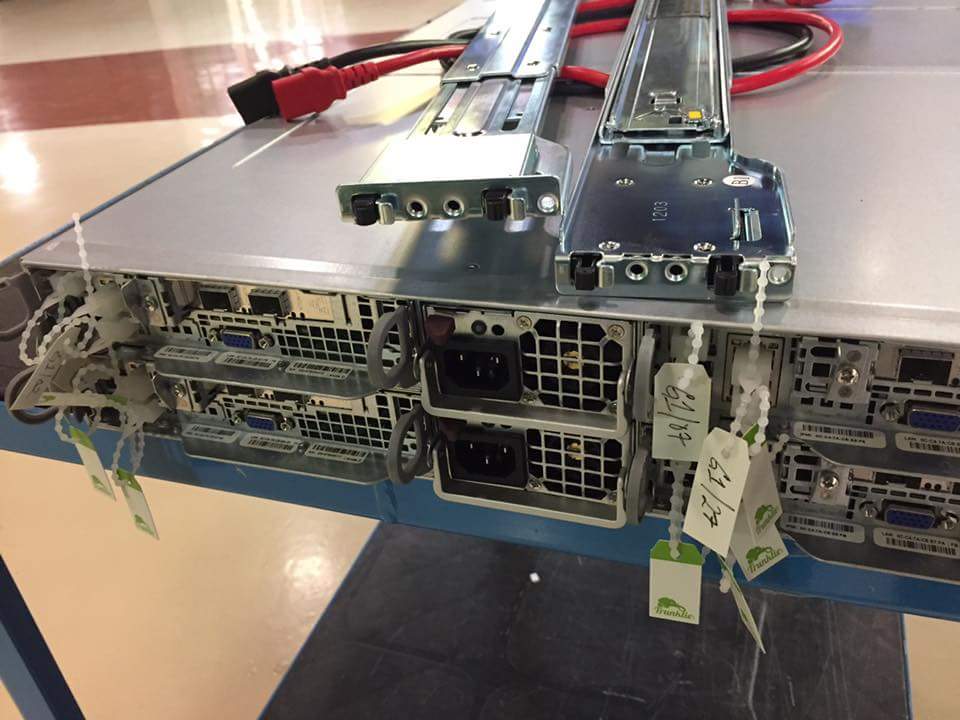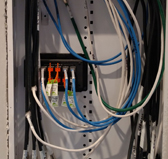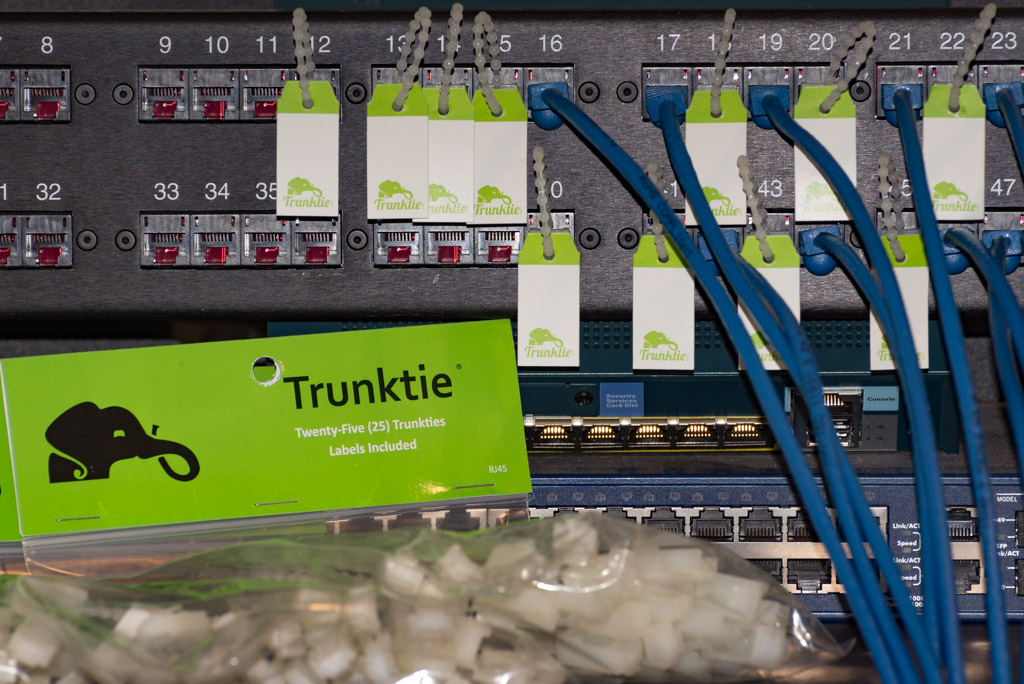How It Works
What is Trunktie?
Trunkties are a simple solution designed to hold, hang, or tag things in position relative to an unpopulated port. Their most common use is to hold tags for identifying network ports, but our customers have found countless creative applications for their use.
How it works
Trunkties plug into an unused port, providing a flexible cable that secures into a multipurpose loop. That's all, it's that simple.
An Unfilled Need
Trunkties were designed to fill a simple, but pervasive need in telecom and other environments. There are many products on the market for labeling cables, but unused ports generally have no clear identification. At best, some have a permanent id or a sticker affixed in the margins between ports. This lack of clear identification leads to confusion, errors, and expense. The simple act of plugging into a patch panel often become an exercise in trial and error or involves engineers operating network testing equipment to find the right port.The errors and wasted time/money can be avoided by simply identifying a port with a detailed label affixed via a Trunktie.
Trunktie In A Corporate Setting
A typical corporate office may deploy hundreds of unused network drops in anticipation of future need. When the time comes to patch these available ports into a switch, it often takes considerable trial and error to identify the proper port, or even the services of an engineer or consultant with toning equipment. If the same unused port were labelled via a Trunktie (ex. "3rd flr - cubicle B8"), then any level of IT employee could enable the port safely and simply. Other examples of use in a corporate environment:
- Identify a staged port (e.g. "this NIC for storage network")
- Holding something in place (for example, a network cable could be unplugged during maintenance and kept in place via the Trunktie loop)
- Mark a single port in a network switch as defective, reserved, etc.
- Leave notes: "retired defective do not use", "install new phone here", "this switch for VM farm only"
- A cabling contractor or IT engineer marking "suite 140 - for new computers", "suite 140 for new phones" so that a company can safely provision new employees on its own
Server Rooms
There are countless uses for trunkties in server rooms of all sizes, from a small-office closet to an enterprise data center. Anywhere there are open ports and a need to mark or hold something, there is a place for trunkties. Common examples of trunkties in a server room include:
- Identifying the unpopulated ports in a patch panel
- Noting specific equipment ("this router for research LAN", "Test/Stage/Prod")
- Communication between peers ("bad port", "if hung reboot this", "install on Saturday")
- Industry-specific markings ("Validated System", "Secured equipment only")
Equipment Relocation
 Often in equipment moves, the most difficult part is the preparation. Phones, computers (both desktops and servers), network gear, storage, etc. all need to be carefully identified if they are to be reconnected in a specific way. With datacenter gear in particular, there is often a very short window of available downtime, and the relocation must be completed as quickly as is safely possible to minimize the business disruption. Using trunkties, equipment can quickly and easily be labelled to support a move. Some examples include:
- Reception desk
- R&D Lab
- IDF1
- Storage LAN, Management LAN, Corp LAN (ID each port on a single server)
- 1GB move to spares
- Domain Controller bring online first
Networked Home Builds And Remodels
 In this current era of computerized everything, networked homes are becoming commonplace. Whether you are building a new home that includes wired infrastructure, or adding network wiring as part of a home upgrade, it is important to get the most from your network. It can be incredibly frustrating to have a wired home, but not know exactly which port on your patch panel connects to which wall outlet around the house. The solution is incredibly simple - plug a trunktie into each patch panel port to label it until that port is needed. In a typical home, you might have "Bed1", "Bed2", "Kitchen", "Den", etc.
Problem solved, quickly, easily, and inexpensively! No need to call an expert, or even your techie relative/friend/coworker.
Trunktie In A Multi-Tenant Office Building
 The MDF in a multi-tenant office building is a continual source of IT problems, most stemming from confusion with the array of equipment belonging to numerous telecom providers and office tenants. Companies often don't know which gear is theirs, leading to delays, support calls, and occasional outages when they make the wrong guess. With Trunkties, telcos, cabling contractors, or building management companies can easily and inexpensively eliminate the source of many problems. Examples of trunkties in action in an MDF/IDF include:
- A cabling contractor wiring a new tenant space and leaving tags that say: "Suite 110 patch this to ISP", "Suite 400 secondary to datacenter"
- A building manager marking "save for suite 230 when leased"
- A cabling contractor or IT engineer marking "Suite 140 for new computers", "Suite 140 for new phones" so that a company could safely provision new employees on its own
|